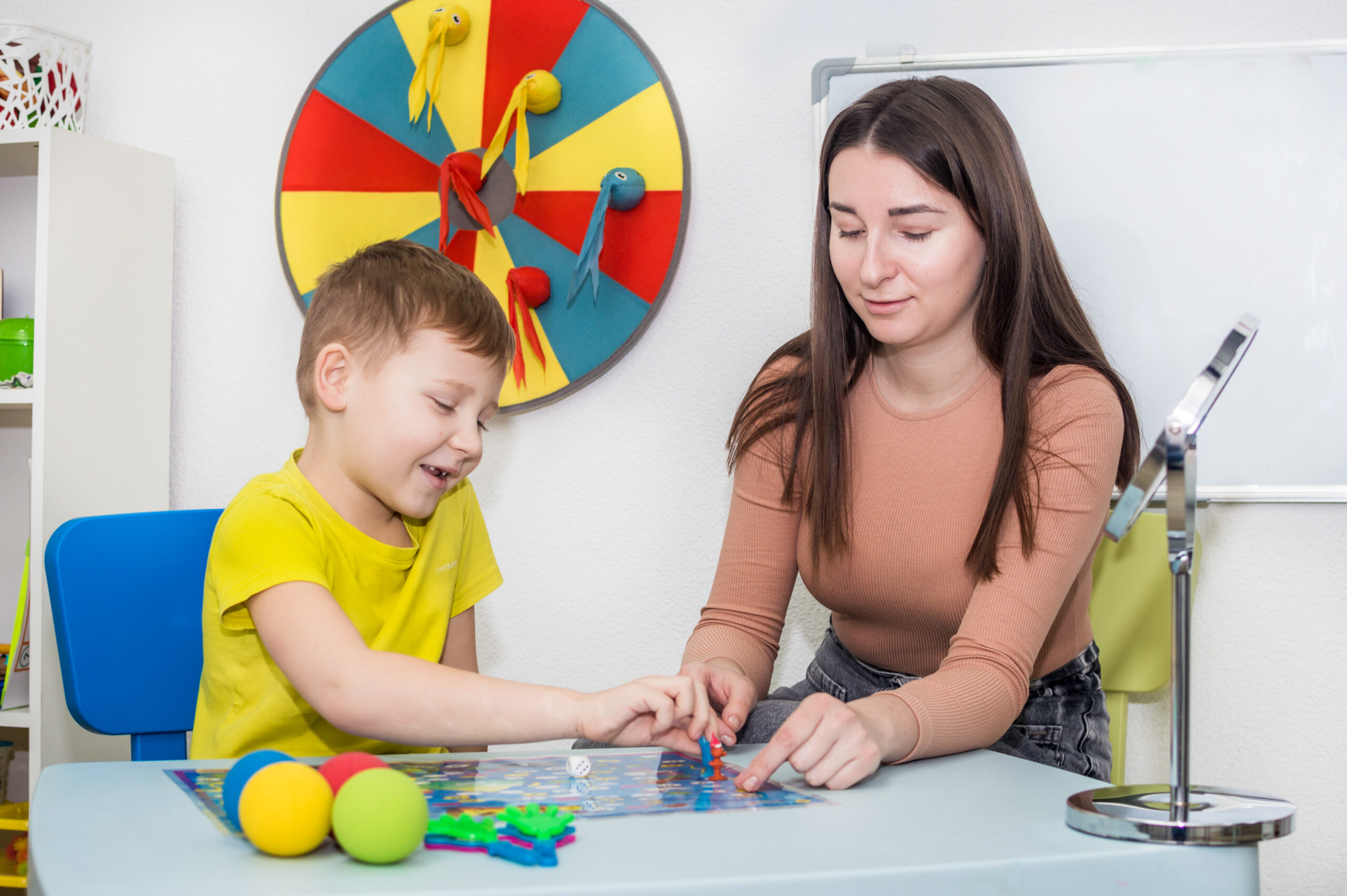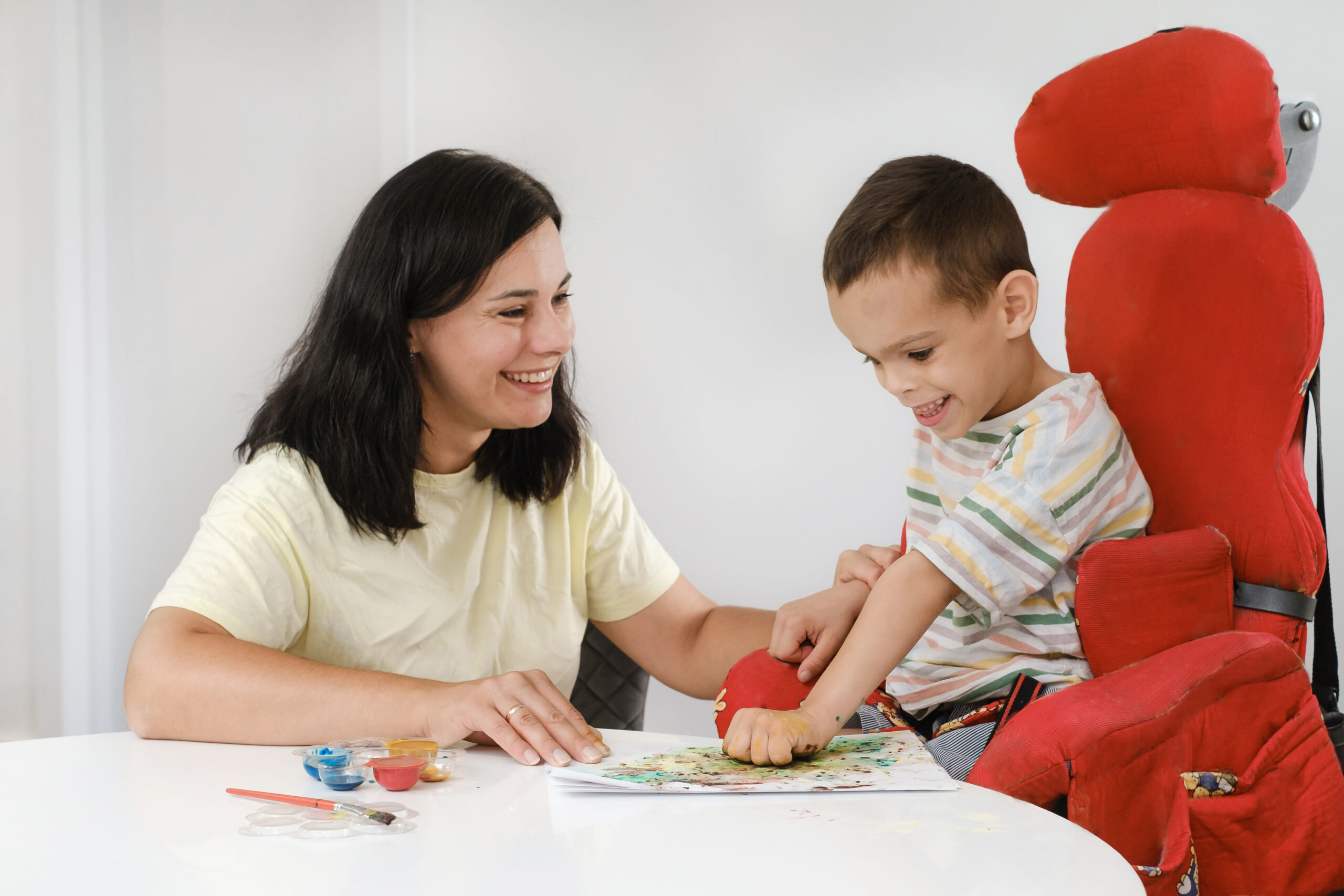Statistics suggest that autism affects 1 in every 31 children in the United States. A condition that has left many families surprised and struggling to understand it fully. What autism truly means is still undiscovered by most people, and thus, with limited knowledge, the journey would become difficult to trudge.
Whether you are a parent who has noticed noticeable differences in your child, an educator who needs better support for their students, or someone who needs to be made aware of autism, this comprehensive guide provides evidence-based information, uncovering every fact about autism spectrum disorder.
Understanding autism is not just about recognizing challenges, but also about celebrating neurodiversity. Studying every nuance of the neurodevelopmental disorder involves identifying strengths and connecting with families in need, providing the support and services. At Theracare Pediatrics Services, we’ve worked with hundreds of families across Arizona, helping children with autism reach their full potential through personalized therapy approaches.
The article unveils everything necessary about autism, be it the early signs, diagnosis, or treatment options, determining the majestic strengths that these incredible autistic people bring to our world. Autism and every bit of it, by the end of the article, you will be left with a clear understanding of autism, and where you can locate a trusted and authentic solution, with professionals assisting you in need.
What Autism Is- Understanding the Condition

Autism is a clear indicator of the difference between the way an individual’s brain processes any information and how it responds to the world. No longer considered a condition in the modern world, it is now referred to as a neurological variation that influences how an individual interacts with, communicates, learns, and experiences their environment.
The Neurodivergent Brain
Not a condition but a neurological variation, autistic individuals are neurodivergent. They have their brain functioning differently from neurotypical expectations. The difference, however, cannot be inherently seen as positive or negative; some people excel in certain areas, while others may still require professional intervention and assistance with a specific task.
From exceptional pattern recognition to detailed analysis and stunning creative abilities, an autistic individual can typically excel in these areas, demonstrating sustained focus on topics that would entertain and engage them, thus keeping their interest.
Why call it a Spectrum
Autism spectrum disorder (ASD) incorporates a wide array of characteristics, abilities, or support needs. No two individuals with autism possess the same characteristics. With some possessing a prolific academic ability and others showing great verbal flair, a majority of these individuals might still struggle during social interactions. There, however, might be cases that are non-verbal but demonstrate a profound understanding of the alternative communication techniques.
Strategies to support are individualized; this is what autism broadly requires. It should never be a one-size-fits-all approach, and no two individuals may be treated with the same technique. While one may prove effective for one, the other might prove impactful for another. This is where early intervention, in the form of professional assistance and individualized care, with the application of personalized therapy plans, becomes crucial.
Are you ready to explore personalized support options for your child? Contact Theracare Pediatrics Services today to speak with our team of specialized therapists.
Autism Across Different Ages- Recognizing the Signs

Unearthing autism and understanding its impact on an individual helps families seek appropriate assistance more quickly. Significantly impacting a child’s development and growth strategy, diversity refers to the approach and support strategies that depend on the signs. Characteristics of autism generally fall into two major categories: social communication differences and repetitive or restricted behaviors.
Toddlers: An Early Age to Intervene
It is during the toddler years that you might observe your child:
Social Communication Differences
- No consistent response to their name being called.
- Minimal interest in games, including peek-a-boo or turn-taking.
- Making use of your hand as a tool to reach the objects they want.
- Struggling or finding it difficult to maintain eye contact.
- They opt for solitary play rather than choosing what’s typically expected of their age.
Behavioral Patterns
- Constant repetition of the phrases they heard.
- Hand flapping or spinning are some everyday movements that they would continue to do.
- Routine changes are causing distress.
- Attracted unequivocally to specific objects, including parts of toys.
- Very proactive and vocal in reacting to sound or other such sensory experiences.
School-Age Children: Decoding Development Patterns

Autism could inevitably start showing more prominent signs, particularly in academic and social settings.
Persistent Communication Challenges
- Reluctancy with back-and-forth conversations.
- Language is taken very literally.
- Struggling to figure out non-verbal cues.
- Showing intensified interest in specific topics.
- Finding it difficult to express emotions.
Behavioral Traits
- Strong, vehement preferences for certain routines.
- Self-regulation with repetitive activities and interests.
- Struggling with a swift switch between activities.
- Preferred interests via exceptional focus.
Adolescence
Teenagers with autism experience the following pattern:
- Difficulty understanding abstract social concepts, specifically sarcasm.
- Not blending well with peer relationships.
- Moral compass is firm and prefers a direct communication style.
- Consistent, intensified interests that turn into expertise.
Worried about your child’s concerning developmental patterns you are observing? Contact Theracare Pediatrics Services for an in-depth analysis, evaluations, and expert guidance.
Autistic Children and Their Incredible Strengths

While the primary focus remains on their challenges, the incredible strengths of autistic individuals could bring revolutionary changes to their homes, families, communities, and schools. Researches consistently reveal specific key pointers:
Cognitive and Academic Strengths
- Great attention to detail and exceptional pattern recognition abilities.
- Maintaining incredible focus for extended periods.
- Incredible memory retention for specific information.
- Stunning, creative, and problem-solving skills.
Personal and Social Strengths
- An impeccable sense of justice and unbeatable moral reasoning.
- An honest and direct communication style.
- Building loyal relationships.
- Perspectives that are unique and enhance group thinking.
- Connecting with in-depth reasoning and authenticity.
Professional and Academic Contributions
Many established individuals, specifically in the fields of art, technology, science, and academia, were autistic. Having contributed through their diversified thought patterns and approaches, these brilliant minds, with their creative abilities, led to innovations and research breakthroughs, bringing different solutions to complex problems.
Autism Causes and Risk Factors

Current research has depicted that autism is a convolution of various genetic and environmental factors, considering the primary development of the brain.
Genetic Component
Autism possesses a strong genetic component; however, it is a more complex process than a single-gene condition. Multiple gene variations could collectively contribute to a single outcome. These could potentially be inherited from parents or may occur as new variations in the child.
Prenatal and Environmental Factors
Several factors in pregnancy could influence autism risk:
- Advanced paternal age (maternal age in particular, around 35).
- Premature birth or low birth weight.
- Consumption of specific medications during pregnancy.
- Closer spacing between pregnancies.
While not leading to autism directly, these conditions could ultimately impact brain development in ways that could cause autism. Questions about development or family history? Our Theracare therapists can help you understand your child’s unique profile.
The Diagnosis: What to Expect During the Process
Autism development would require comprehensive evaluation and assessment by those qualified professionals who have their specialization in developmental disorders.
Screening at the Initial Phase
The screening process typically begins during your routine visits to the pediatrician. The American Academy of Pediatrics recommends autism-specific screening between 18 and 24 months, via queries that can be addressed at any stage.
A Comprehensive Diagnostic Analysis
A formal autism evaluation includes:
- A comprehensive developmental history.
- The child is being observed under various settings.
- Standardized assessments like the Autism Diagnostic Observation Schedule (ADOS)
- Educators and caregivers give multiple inputs.
- Assessing co-occurring conditions.
Criterion of Diagnosis
For an autism diagnosis, a child must demonstrate:
- Social Communication Challenges in all three areas:
- Nonverbal communication skills.
- Social-emotional reciprocity.
- Developing and maintaining relationships.
Additionally, any two of the following factors:
- Usage of objects, speech, and physical gestures is repetitive.
- Insisting on a specific routine, not readily accepting changes.
- Focused highly on intense interests.
- Sensory responses that are unusual.
Treatment Approaches and Therapies that Work

Early intervention provides the foundation for helping autistic children develop skills, build on their strengths, and navigate challenges more effectively.
Evidence-Based Therapeutic Interventions
- Applied Behavior Analysis (ABA): Emphasis on teaching specific skills, gradually reducing challenging behavior via consistent, systematic approaches.
- Speech and Language Therapy: Focuses on addressing communication skills, encompassing both verbal and non-verbal communication, social interaction, and promoting alternative communication methods.
- Occupational Therapy: Helps children develop daily living skills through evidence-based therapeutic interventions that instill purpose and promote self-reliance. While enhancing sensory processing abilities, the therapy focuses on improving fine motor coordination.
- Physical Therapy: Supports gross motor development, coordination, and physical fitness.
Personalized Education Support
Many autistic children benefit from:
- Individualized Education Programs (IEPs)
- 504 accommodation plans
- Specialized classroom supports
- Social skills training programs
A Family Therapy for Family-Centered Approaches
Adequate autism support is not limited to an individual alone, but should also support the entire family. From the quintessential parent training programs to sibling support groups and options like family therapy, these collaborative programs enable the whole family to thrive together.
At Theracare Pediatrics Services, our team of over 250 specialized therapists across Arizona collaborates to create detailed support plans tailored to each individual’s needs. It’s time to schedule a meeting with our team to discuss how we can support your family’s journey.
Managing Coinciding Situations

It often happens that most autistic children experience additional conditions, benefiting from targeted support.
Common Coincident Situations:
- Sensory processing difficulties
- Gastrointestinal issues
- Learning disabilities
- Anxiety and mood disorders
- ADHD and attention challenges
- Sleep difficulties
A Seamless Integration of Treatment Approach
Integrated treatment approaches provide a supportive therapy cohesively, incorporating:
- A comprehensive medical management is provided when required
- Timely therapeutic interventions
- Educational accommodations
- Strategies to support families
Creating Supportive Communities
Letting autistic individuals thrive in an environment where they are welcomed with warmth and treated with affection via a community-wide understanding and acceptance.
Educational Settings
Schools inherently support autistic students through:
- Sensory-friendly classroom environments.
- Clear routine with visual support.
- Educating peers about neurodiversity.
- Personalized learning approaches.
Community-Wide Acceptance
Building via inclusive communities that include:
- Educating on autism awareness.
- Public spaces that can be accessed.
- Knowing service providers.
- Valuing diverse thinking through employment opportunities.
Keen on connecting with professionals who understand autism and can help your family find the right pathway to appropriate resources? Contact Theracare Pediatrics Services today!





